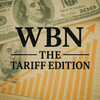
.
Canadian exporters are facing their toughest U.S. trade climate in decades. As of August 14, 2025, a sweeping 35% tariff applies to most Canadian goods under IEEPA, alongside 50% duties on steel and aluminum and 25% tariffs on autos and parts under Section 232. The result? An unpredictable market that demands rapid adaptation.
Canada has responded with 25% surtaxes on nearly $30 billion of U.S. goods and targeted retaliation on vehicles that fail to meet CUSMA’s content rules. While some exporters are shielded if their products qualify under CUSMA’s rules of origin, the U.S. is now a far less predictable trade partner than before.
Could Trump Tear Up CUSMA Before 2026?
The CUSMA (USMCA) review isn’t scheduled until 2026, but recent White House actions show it could be used as political leverage sooner. While early termination is unlikely, the risk is higher now than at any point since the agreement was signed. Businesses that prepare for that possibility will have a decisive advantage.
Mexico: The Overlooked Opportunity
If U.S. trade relations tighten further, Mexico remains both a CUSMA partner and a gateway to Latin America’s trade network.
- Light assembly in Mexico can help products meet regional content thresholds, keeping them CUSMA-compliant for U.S. entry.
- Mexico’s own trade deals give Canadian companies access to the EU, Japan, and South America.
- Joint ventures with Mexican firms can preserve U.S. access while opening new markets.
Immediate Survival Moves for Canadian Companies
- Audit your HS codes to pinpoint exposure to IEEPA and 232 tariffs.
- Qualify under CUSMA wherever possible- boost North American content and secure certificates of origin.
- Use U.S. Foreign-Trade Zones (FTZs) to defer or reduce duty costs.
- Tap duty relief and drawback programs for goods that are re-exported.
- Build tariff pass-through clauses into every U.S. sales contract.
- Diversify now- CPTPP and CETA partners offer tariff-free access to over 50 countries.
- Develop a dual-line strategy: one product line optimized for U.S. compliance, another for global markets.
Positioning for 2026 and Beyond
The companies that thrive will treat tariffs as a permanent reality rather than a temporary disruption. That means:
- Building flexibility into sourcing and assembly (Canada, Mexico, and selected third countries).
- Expanding digital and direct-to-market channels to reduce dependency on physical shipments subject to tariffs.
- Maintaining strong trade intelligence to anticipate policy changes before they happen.
The bottom line: If your business hasn’t retooled for this new trade reality, the time to act is now—before tariffs make the decision for you.
About the Author
Rob Arthurs is a Certified Business Mechanic and international trade consultant with 30+ years of experience helping companies go global. A former senior trade official with the BC Government, he has led over 200 trade missions, advised multiple governments, and helped Canadian exporters secure many lucrative contracts. Today, through Robert Arthurs International, he guides businesses in navigating tariffs, building resilient supply chains, and unlocking growth in global markets.
📧 rob@robertarthurs.com | 🌐 www.robertarthurs.com | 📞 +1 (604) 202-4641
#Canada Trade #CUSMA #USMCA #Tariffs #Export Strategy #International Trade #Trade Diversification #Canadian Business #Mexico Trade #North American Trade #Robert Arthurs International





